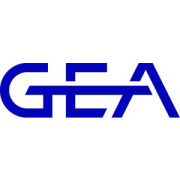Coating coin-shaped cores: a downstream technology solution to reduce tablet capping

When it comes to reducing the incidence of tablet capping or delamination, the use of flat-faced or coin-shaped cores offers several benefits compared with biconvex ones. Previously, however, coating these forms has been problematic. Novel technology from GEA Pharma & Healthcare now provides a solution.
Capping is a term used to describe the detachment of a cross-sectional fragment from the face of a tablet. This usually occurs just after the tablet has been ejected from the compression die and will invariably lead to rejection.
For a registered product, changing the formulation is not the preferred option to resolve such issues. Moreover, for a high-dose product, there are limits to formulation changes and the final solution may not fully resolve the capping problem.
Yet, an alternative solution may now be available from GEA.
Why does capping occur?
If a given substance is exposed to a pressure load, it will react in several different ways. If a modelling material is deformed by mechanical energy, for example, the mass will maintain its form even when the external force is no longer applied; this is called plastic deformability.
If a spring is deformed mechanically, it will return to its initial state even when the external force is no longer applied; this is referred to as elastic deformability.
If a mechanical load is applied to, say, cornflakes, the phenomenon of brittle fracture occurs. And, finally, there’s the issues of viscoelasticity, which is a combination of the previously mentioned reactions. This describes substances that react either plastically or elastically in a time-dependent manner.

Position your company at the heart of the global Pharma industry with a CPHI Online membership
-
Your products and solutions visible to thousands of visitors within the largest Pharma marketplace
-
Generate high-quality, engaged leads for your business, all year round
-
Promote your business as the industry’s thought-leader by hosting your reports, brochures and videos within your profile
-
Your company’s profile boosted at all participating CPHI events
-
An easy-to-use platform with a detailed dashboard showing your leads and performance